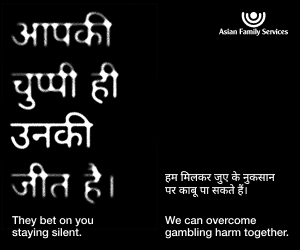Guy Fawkes Day – the Kiwi spin on Diwali

Fifth of November is celebrated each year with fireworks, lighting of bonfires and family gatherings . Known as Guy Fawkes Day, this celebration is in commemoration of a significant event in history. Ever wondered what this is all about ? Who was Guy Fawkes and what is the historical significance of this day? Read on:
After the demise of Queen Elizabeth-1 in 1603, James-1 ascended the throne of England. Catholics in England, who at that time had been persecuted under the rule of Queen Elizabeth-1, looked forward to better tolerance of their faith under the rule of King James-1 who was the son of a Catholic mother. However, this was not to be. King James turned out to be equally intolerant of the Catholics as his predecessor had been.
In 1605, a group of young men decided that recourse to violence alone could alleviate the problems facing the English Catholics. Accordingly, they decided to blow up the Houses of Parliament along with King James-1 and possibly the Prince of Wales as well. A modern day act of terrorism, one may say.
As the detailed planning of the plot progressed, a few of the conspirators started having second thoughts about the killing of innocent members of Parliament as also those who had promoted more freedom for the Catholics. By then, to carry out their plan, the conspirators had managed to store 36 barrels of gun-powder in a cellar hired by them directly below the House of Lords i.e. The Upper House.
However, one amongst the conspirators, wrote an anonymous letter to his friend, a member of the House of Lords, to refrain from going to the Parliament on the fifth of November under all circumstances.
The news and the letter reached the King, who ordered his forces to unearth the conspiracy. In the early morning hours of November the Fifth, the King's forces stormed the cellar. Guy Fawkes, one of the conspirators, was apprehended, guarding the cache of gunpowder, slow burning fuses and matches. Under torture, he revealed the names of the other conspirators who were executed after trial on 27 January 1606. Guy Fawkes was executed later on 31st January 1606.
The saving of the King was viewed as 'Divine Intervention' by the public. Bonfires were lit in celebration and effigies of Guy Fawkes burnt across England. Over a period of time, fireworks were introduced to the celebrations; the tradition there after spread to other territories and colonies under the Crown.
Today, the reigning monarch enters the Parliament just once a year on the opening i.e. " State Opening of Parliament ". Traditionally, to this day, the Yeomen of the Guard search the cellars of Westminster.
A Nursery Rhyme to commemorate " The Gun Powder Plot " is still taught all over U.K. It goes as under:
Remember, remember the fifth of November,
Gunpowder treason and plot.
We see no reason
Why gunpowder treason
Should ever be forgot!
Guy Fawkes, guy, t'was his intent
To blow up king and parliament.
Three score barrels were laid below
To prove old England's overthrow.
By god's mercy he was catch'd
With a darkened lantern and burning match.
So, holler boys, holler boys, Let the bells ring.
Holler boys, holler boys, God save the king.
And what shall we do with him?
Burn him!
Fifth of November is celebrated each year with fireworks, lighting of bonfires and family gatherings . Known as Guy Fawkes Day, this celebration is in commemoration of a significant event in history. Ever wondered what this is all about ? Who was Guy Fawkes and what is the historical significance...
Fifth of November is celebrated each year with fireworks, lighting of bonfires and family gatherings . Known as Guy Fawkes Day, this celebration is in commemoration of a significant event in history. Ever wondered what this is all about ? Who was Guy Fawkes and what is the historical significance of this day? Read on:
After the demise of Queen Elizabeth-1 in 1603, James-1 ascended the throne of England. Catholics in England, who at that time had been persecuted under the rule of Queen Elizabeth-1, looked forward to better tolerance of their faith under the rule of King James-1 who was the son of a Catholic mother. However, this was not to be. King James turned out to be equally intolerant of the Catholics as his predecessor had been.
In 1605, a group of young men decided that recourse to violence alone could alleviate the problems facing the English Catholics. Accordingly, they decided to blow up the Houses of Parliament along with King James-1 and possibly the Prince of Wales as well. A modern day act of terrorism, one may say.
As the detailed planning of the plot progressed, a few of the conspirators started having second thoughts about the killing of innocent members of Parliament as also those who had promoted more freedom for the Catholics. By then, to carry out their plan, the conspirators had managed to store 36 barrels of gun-powder in a cellar hired by them directly below the House of Lords i.e. The Upper House.
However, one amongst the conspirators, wrote an anonymous letter to his friend, a member of the House of Lords, to refrain from going to the Parliament on the fifth of November under all circumstances.
The news and the letter reached the King, who ordered his forces to unearth the conspiracy. In the early morning hours of November the Fifth, the King's forces stormed the cellar. Guy Fawkes, one of the conspirators, was apprehended, guarding the cache of gunpowder, slow burning fuses and matches. Under torture, he revealed the names of the other conspirators who were executed after trial on 27 January 1606. Guy Fawkes was executed later on 31st January 1606.
The saving of the King was viewed as 'Divine Intervention' by the public. Bonfires were lit in celebration and effigies of Guy Fawkes burnt across England. Over a period of time, fireworks were introduced to the celebrations; the tradition there after spread to other territories and colonies under the Crown.
Today, the reigning monarch enters the Parliament just once a year on the opening i.e. " State Opening of Parliament ". Traditionally, to this day, the Yeomen of the Guard search the cellars of Westminster.
A Nursery Rhyme to commemorate " The Gun Powder Plot " is still taught all over U.K. It goes as under:
Remember, remember the fifth of November,
Gunpowder treason and plot.
We see no reason
Why gunpowder treason
Should ever be forgot!
Guy Fawkes, guy, t'was his intent
To blow up king and parliament.
Three score barrels were laid below
To prove old England's overthrow.
By god's mercy he was catch'd
With a darkened lantern and burning match.
So, holler boys, holler boys, Let the bells ring.
Holler boys, holler boys, God save the king.
And what shall we do with him?
Burn him!









Leave a Comment